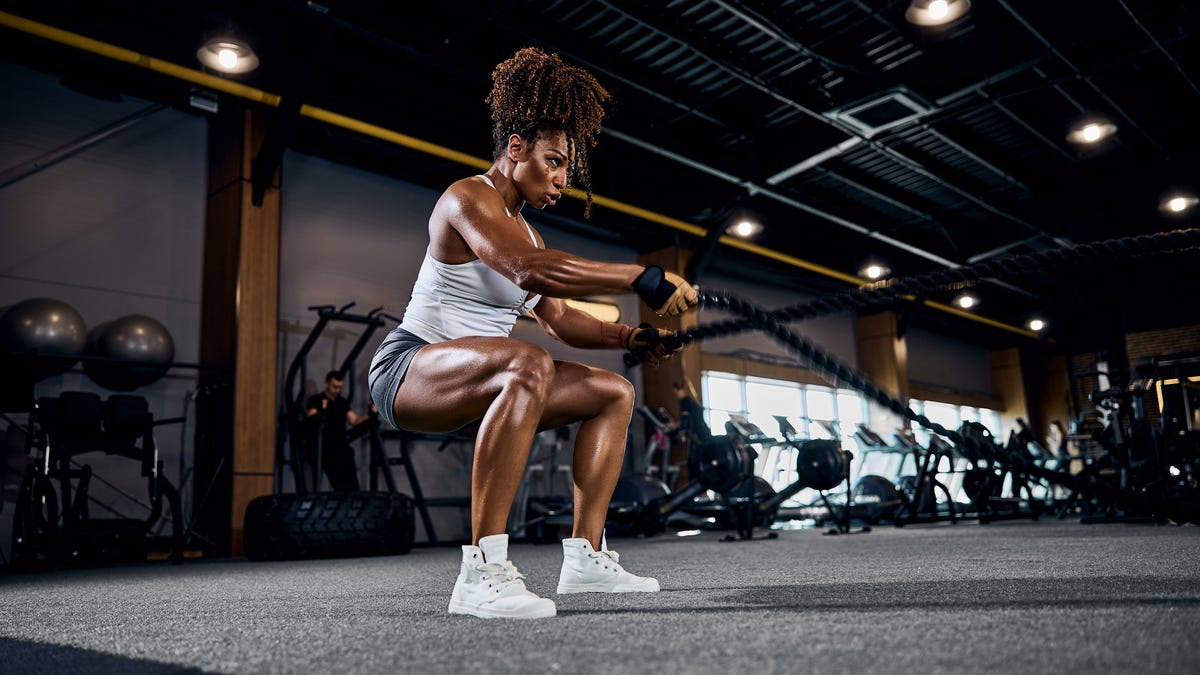Fitness
Are Those “Pilates Shakes” Doing More Harm Than Good?
:quality(85):upscale()/2024/07/18/769/n/1922729/d13900e66699507a1b9d32.12261662_.jpg)
“Push through the shakes.” It’s a familiar refrain in Pilates, barre class, and other low-impact workouts. However, the feeling — and sight — of your muscles physically shaking or twitching can be concerning. Is it truly something you should ignore? Or is it a sign to take things slow? And is the quivering even worth it?
Before you get back on the reformer or hit the barre, stick around to learn more about your body is reacting. To understand more about what causes your muscles to shake and whether it’s cause for concern, PS spoke to an MD to get their take on how to handle this all-too-common situation.
Why Your Muscles Shake During Pilates or Barre
Unlike activities such as running or playing basketball, which rely on your fast-twitch muscles fibers, Pilates and barre target your stabilizer muscles through isolated movements, says Erin Nance, MD, a board-certified orthopedic surgeon. For example, you may hold a plank for an extended period of time or keep your arms extended overhead with weights in your hands. As a result, your muscles fatigue and start to look for additional support.
“Your body is trying to recruit other muscles to help stabilize the situation, and, in doing so, the motor neurons are firing in an aggressive manner, and that’s what’s causing the twitching,” Dr. Nance explained in her TikTok video on the topic.
While the “shakes” are commonly attributed to reformer-based Pilates classes, Dr. Nance tells PS that you may also see them appear during other activities that include prolonged contractions, such as heavy weight lifting or TRX-based exercises. Even a seemingly simple movement, such as holding your leg out in front of your body for an extended period of time, would eventually lead to these types of shakes or twitches.
So, Should You Be Concerned When Your Muscles Shake?
For most people, this shakiness is a normal physiological response, Dr. Nance says. She tends to view it as a “yellow light.”
“It’s something to notice about your body,” she tells PS. “You can still continue what you’re doing, but you’re pretty much at your max [capacity], so you’re not going to be able to do that for too much longer.”
However, there are a few things to take into consideration. If you’re holding equipment, such as heavy weights or a resistance band, or you’re in a complex position, take this shakiness as your sign to relax, Dr. Nance says. You want to avoid pushing your body to a point of complete fatigue that may lead to you injuring yourself (or those around you) due to a dropped weight or snapped band. However, if you’re in a position that’s easier to exit, such as a plank where you can flop onto your stomach, it’s OK to push yourself a bit.
Over time, as your body becomes more conditioned to the exercises you’re doing, this type of shakiness should decrease.
Why Form Is So Important
When you start to feel those shakes, it’s particularly crucial to check in with your form. If you find yourself overcompensating and doing the exercise in a way that puts your body in a less-than-ideal position, Dr. Nance says it’s time to take a break. “Focus on an exercise time period where you can have proper form, and however long that lasts is however long it lasts,” she says. Without good positioning, you may inadvertently injury yourself.
When You May Want to See a Medical Professional
While this type of shakiness is a natural physiological response, if this type of twitching is continuing long after you’ve stopped the exercise, consider speaking to a medical professional.
“Mild shakiness and twitching from fatigue can last for up to a few hours after exercising (especially the smaller muscles in your forearms and hands). If the shakiness or twitching is painful, worsening, or lasting longer than a day, that is cause for concern to speak with your doctor,” Dr. Nance tells PS.
Dr. Nance adds that other potential red flags include if you experience dizziness or develop nausea in tandem with the shakes, which could be indicative of a larger physiological issue, such as postural orthostatic tachycardia syndrome (POTS).
She also suggests looking at patterns in your workouts. For example, if you typically only experience the shakes in the last 15 seconds of a plank, but suddenly start to see them appear in the first 15 seconds, that could be indication of a larger physiological issue—and a reason to contact your doctor. For example, she mentions that there are some neuromuscular conditions that can show up as tremors or seizures.
Ultimately, you know your body best. If the shaking seems abnormal to you or lingers long after your workout, flagging it to your healthcare provider is a good idea. They’ll be able to assess your shaking, what’s causing it, and whether or not the workout is right for you.
Ellen O’Brien is a New York City-based freelance writer and editor covering health, wellness, and lifestyle topics. She was an associate fitness editor at Peloton and a digital editor at Outside and Yoga Journal.










